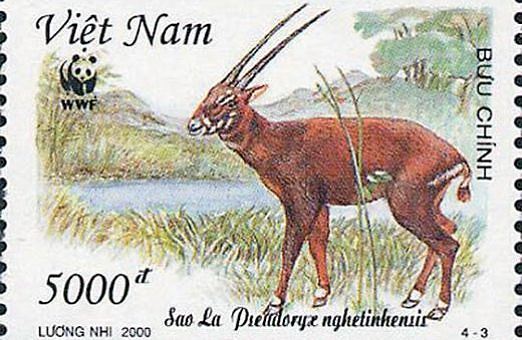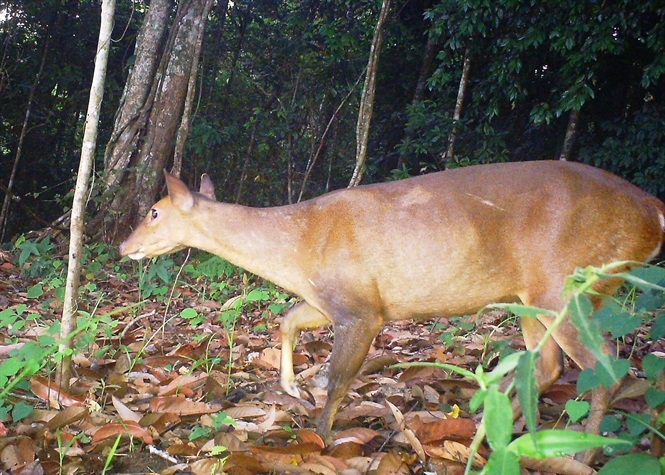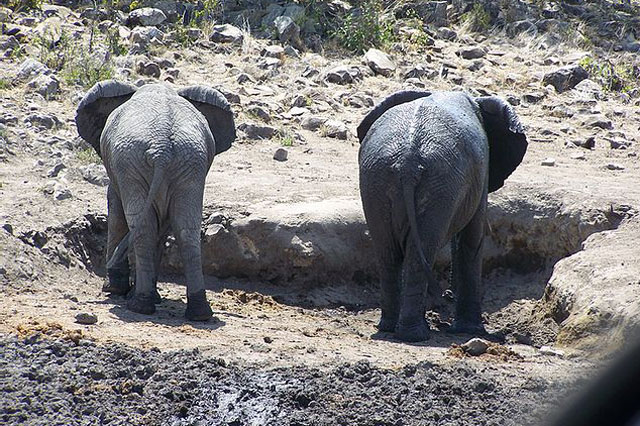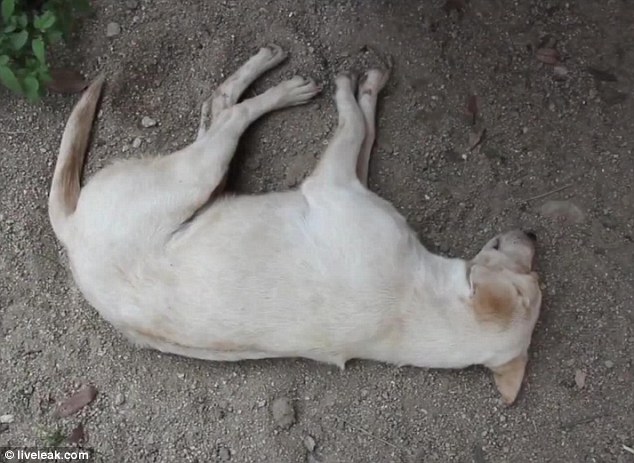The saola (Pseudoryx nghetinhensis), also called spindlehorn, Asian unicorn, or infrequently, Vu Quang bovid, is one of the world’s rarest large mammals, a forest-dwelling bovine native to the Annamite Range in Vietnam and Laos. It was described in 1993 following a discovery of remains in Vũ Quang National Park by a joint survey of the Vietnamese Ministry of Forestry and the World Wide Fund for Nature.[2][3][4] Saolas have since been kept in captivity multiple times, although only for short periods as they died within a matter of weeks to months.[5] The species was first reported in 1992 by Do Tuoc, a forest ecologist, and his associates.[5] The first photograph of a living saola was taken in captivity in 1993. The most recent one was taken in 2013 by a movement-triggered camera in the forest of central Vietnam.[6][7] It is the only species in genus Pseudoryx
In May 1992, the Ministry of Forestry, Vietnam sent a survey team to examine the biodiversity of the newly established Vu Quang National Park. On this team were Do Tuoc, Le Van Cham and Vu Van Dung (of the Forest Inventory and Planning Institute); Nguyen Van Sang (of the Institute of Ecological and Biological Resources); Nguyen Thai Tu (of Vinh University); and John MacKinnon (of the World Wildlife Fund).  On 21 May, the team procured a skull featuring a pair of strange, long and pointed horns from a local hunter. They came across a similar pair in the Annamite Range in the northeastern region of the reserve the following day. The team ascribed these features to a new bovid species, calling it the “saola” or the “Vu Quang ox” to avoid confusion with the sympatric serow. The WWF officially announced the discovery of the new species on 17 July 1992.
On 21 May, the team procured a skull featuring a pair of strange, long and pointed horns from a local hunter. They came across a similar pair in the Annamite Range in the northeastern region of the reserve the following day. The team ascribed these features to a new bovid species, calling it the “saola” or the “Vu Quang ox” to avoid confusion with the sympatric serow. The WWF officially announced the discovery of the new species on 17 July 1992.








